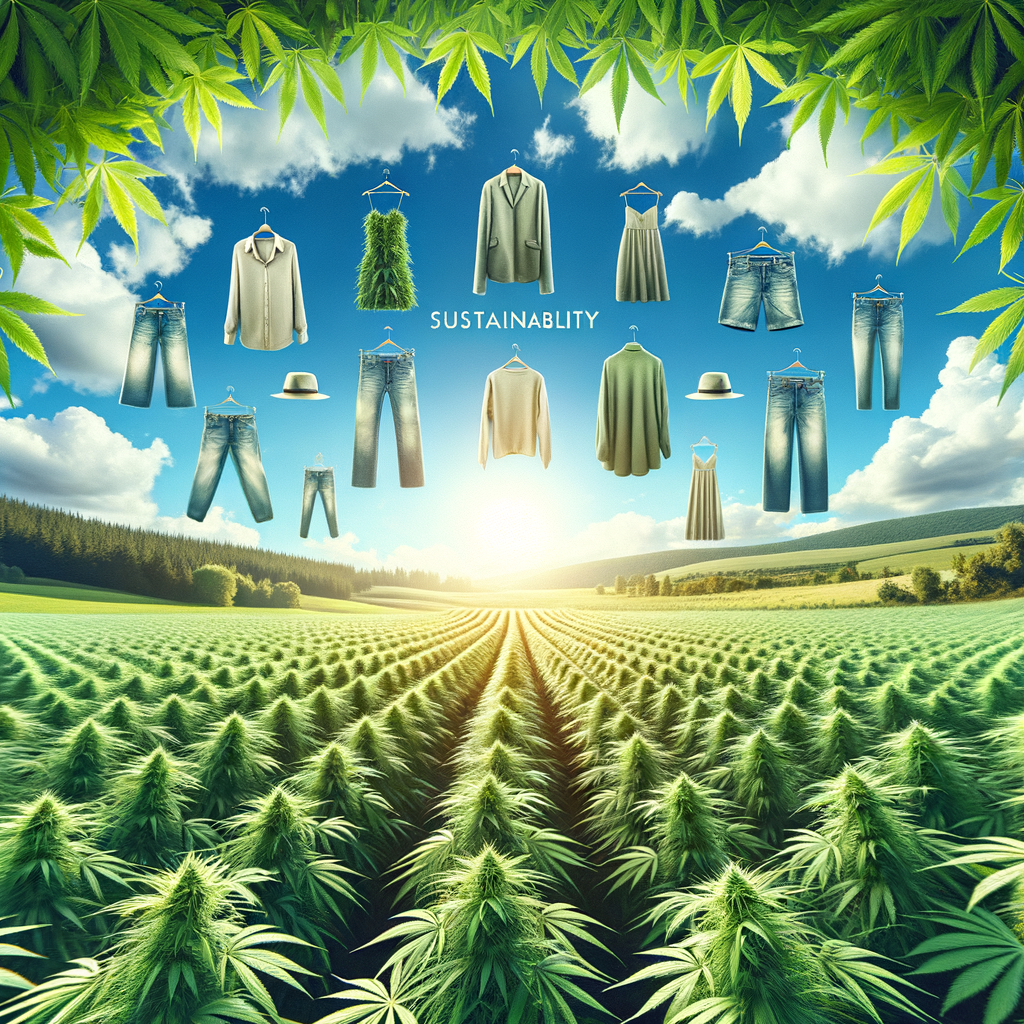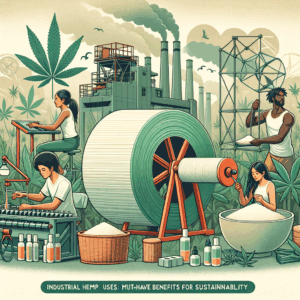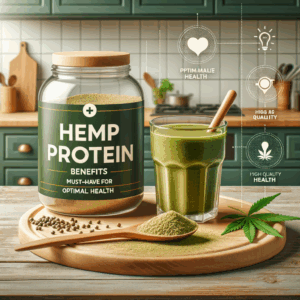
Hemp Clothing Sustainability: The Must-Have Eco-Friendly Choice
- Understanding Hemp: The Plant Behind Sustainable Fashion
- The Environmental Impact of Clothing Production
- Water Usage and Hemp
- Soil Health and Hemp
- The Process of Making Hemp Clothing
- Harvesting and Processing
- Production and Manufacturing
- Benefits of Choosing Hemp Clothing
- Comfort and Breathability
- Durability and Longevity
- UV Resistance
- Hemp vs. Conventional Fabrics
- The Growing Market for Hemp Clothing
- Popular Brands Using Hemp
- Supporting Local Economies
- Overcoming Challenges in Hemp Clothing Adoption
- Misconceptions About Hemp
- Regulatory Hurdles
- Caring for Your Hemp Clothing
- Washing Tips
- Eco-Friendly Care Products
- Designing Your Hemp Wardrobe
- Versatile Outfits
- Accessory Options
- The Future of Hemp Clothing
- Community Engagement
- Scaling Production
- Conclusion: The Time for Hemp Clothing is Now
- Frequently Asked Questions
- References
Understanding Hemp: The Plant Behind Sustainable Fashion
Hemp has been part of the human experience for thousands of years. This versatile plant offers a myriad of benefits that often get overlooked. Today, as we face the urgent need for sustainable practices, hemp emerges as a crucial player in eco-friendly clothing. Unlike conventional textiles that heavily draw on resources, hemp offers a renewable alternative.
Eco-conscious consumers increasingly seek materials that leave a lighter footprint. Hemp clothing not only provides durability and comfort but also aligns with sustainability goals. Let’s explore what makes hemp such a game-changer in the fashion industry.
The Environmental Impact of Clothing Production
Fashion is one of the most polluting industries in the world. Traditional textiles often require extensive water consumption and involve harmful chemicals. For example, the production of cotton typically uses over 20,000 liters of water for just one kilogram of fabric. This massive figure illustrates the urgent need for more sustainable practices.
The global fashion industry generated 92 million tons of waste in 2021 alone. This staggering statistic highlights that the conventional process not only consumes vast resources but also creates a significant environmental burden. Shifting to eco-friendly materials like hemp can reduce these adverse effects.
Water Usage and Hemp
In contrast, hemp requires significantly less water compared to cotton. It needs about 50-70% less water to grow, making it a more sustainable crop. Additionally, hemp plants are naturally pest-resistant. This means farmers can skip harmful pesticides, further reducing the environmental impact of cultivation.
Soil Health and Hemp
Hemp also positively affects soil health. Its deep root system helps prevent erosion and promotes nutrient cycling. Additionally, hemp returns nutrients to the soil, making it a beneficial rotation crop. This versatility showcases how switching to hemp can contribute to healthier agricultural practices.
The Process of Making Hemp Clothing
Hemp clothing production is both efficient and low-impact. The process begins with growing the hemp plant, which typically takes around 4 months from seed to harvest. After harvesting, farmers separate the hemp stalks into fibers, which can then be processed into fabric.
Harvesting and Processing
Harvesting hemp is straightforward. Farmers cut the stalks and let them dry in the field. After drying, they ret hemp to break down the stem and separate the fibers. This process often involves techniques that are less water-intensive compared to cotton processing.
Once the fibers are extracted, they can be spun into yarn. The resulting fabric is breathable, durable, and versatile. This makes it suitable for a wide range of clothing items, from casual wear to more formal attire.
Production and Manufacturing
In addition to its cultivation, the manufacturing process for hemp clothing is less intensive. Many manufacturers emphasize eco-friendly practices, such as using natural dyes and avoiding harmful chemicals. This commitment to sustainability extends the lifespan of hemp clothing, allowing consumers to wear their pieces for years.
The longevity of hemp fabric is one of its standout features. Durable and resistant to wear, hemp clothing can outlast many other fabrics. This durability leads to less frequent purchases, reducing consumer impact on the environment.
Benefits of Choosing Hemp Clothing
Hemp clothing offers numerous advantages that far exceed its environmental benefits. Here are a few reasons why you should consider hemp over traditional clothing materials.
Comfort and Breathability
Hemp fabric is incredibly comfortable to wear. Its fibers allow for excellent breathability, making it a great choice for warm climates. Whether you’re hiking, lounging, or just running errands, hemp keeps you feeling fresh.
Durability and Longevity
As mentioned earlier, hemp clothing is durable. It withstands wear and tear better than many fabrics, such as cotton or polyester. This resilience makes it a wise investment, as you’ll spend less money on replacements over time.
UV Resistance
Hemp fibers naturally resist UV rays, offering additional skin protection. This is particularly beneficial in sunny areas. Wearing hemp clothing can help prevent sunburn and protect your skin efficiently while outdoors.
Hemp vs. Conventional Fabrics
When comparing hemp to other fabrics, the benefits become even clearer. Here’s a quick breakdown of hemp versus some commonly used materials.
| Feature | Hemp | Cotton | Polyester |
|——————-|——————|———————|——————-|
| Water Usage | 50-70% less | High | Low |
| Chemical Use | Minimal | High | Moderate |
| Durability | High | Moderate | Low |
| Environmental Impact | Low | High | Moderate |
This table serves to illustrate that while many fabrics have their place in the wardrobe, hemp stands out in several key areas.
The Growing Market for Hemp Clothing
The demand for sustainable fashion has exploded in recent years. More consumers now prioritize ethical sourcing and eco-friendly materials. This growing awareness has led to an influx of brands committed to offering hemp clothing.
Popular Brands Using Hemp
Several innovative brands have emerged, focusing on hemp as their primary fabric. These companies not only sell clothing but also educate consumers about the benefits of hemp. Some notable brands include:
– Hemp Hoodlamb: Specializes in warm outerwear made from hemp and organic cotton.
– Toad&Co: Offers casual clothing featuring hemp blended with other natural fibers.
– Pact: Focuses on organic and sustainable materials, including hemp in their lines.
Supporting Local Economies
Choosing hemp clothing also supports local farmers and businesses. The cultivation of hemp is often more sustainable and manageable than other crops. By shifting consumer preferences toward hemp, we can encourage sustainable agricultural practices while also bolstering local economies.
Overcoming Challenges in Hemp Clothing Adoption
Despite its many advantages, challenges still exist in the hemp clothing sector. Misconceptions and regulatory issues can hinder growth.
Misconceptions About Hemp
Many people still associate hemp with marijuana, leading to confusion. This misconception can deter potential consumers. Educating the public about hemp’s benefits and uses can help shift perceptions. Social media and other platforms serve as effective tools for spreading this awareness.
Regulatory Hurdles
In several countries, hemp cultivation remains subject to strict regulations. While these measures are intended for safety, they can stifle farmer participation. Advocacy for more relaxed laws can help facilitate the growth of this eco-friendly industry.
Caring for Your Hemp Clothing
Caring for hemp clothing is essential for longevity. To maintain its durability, use gentle washing methods and natural detergents. Avoid bleach and fabric softeners, which can damage the fibers.
Washing Tips
1. Cold Wash: Use cold water to prevent shrinkage and preserve colors.
2. Line Dry: Air dry your hemp clothing. It saves energy and helps maintain its shape.
3. Iron on Low Heat: If necessary, iron your hemp garments on a low setting to avoid scorching.
Eco-Friendly Care Products
Consider using eco-friendly detergents and washing methods to further enhance the sustainability of your wardrobe. This reduces your environmental footprint, aligning your laundry habits with your broader lifestyle choices.
Designing Your Hemp Wardrobe
Incorporating more hemp into your wardrobe doesn’t just improve sustainability. It also offers versatile style options. Whether you favor casual wear, work attire, or athleisure, there’s something for everyone.
Versatile Outfits
Hemp clothing can be dressed up or down with just a few accessories. Pair a hemp dress with sandals for a relaxed day out, or layer it with a jacket and boots for a chic evening look.
Accessory Options
Hemp accessories are also making waves. Look for hats, bags, and footwear crafted from hemp. These items not only showcase style but also highlight your commitment to eco-friendly choices.
The Future of Hemp Clothing
As awareness grows surrounding sustainability, the future of hemp clothing looks promising. Innovations within the industry continue to emerge, focusing on better cultivation and production methods. The collaboration between brands, farmers, and consumers reinforces this progress.
Community Engagement
Engaging communities is vital for promoting hemp. Local workshops and educational programs can enlighten people about the benefits of this plant. Building a community around hemp can foster a positive impact on both the environment and local economies.
Scaling Production
As the demand for hemp clothing rises, expanding production capabilities becomes crucial. Investing in new technologies and sustainable farming techniques can enhance accessibility to hemp clothing. This expansion can also bring prices down, making hemp options more accessible to a wider audience.
Conclusion: The Time for Hemp Clothing is Now
Hemp clothing represents a significant step toward eco-friendly fashion. Its benefits for the environment, human health, and economy are irrefutable. By choosing hemp, consumers can advocate for a more sustainable future.
As the demand for sustainable fashion increases, now is the perfect time to embrace hemp clothing. Make choices that reflect your values, and you’ll contribute to a healthier planet.
Frequently Asked Questions
1. What is hemp clothing made from?
Hemp clothing is made from the fibers of the hemp plant. These fibers are extracted from the stalks and spun into fabric.
2. Is hemp clothing durable?
Yes, hemp clothing is highly durable and can outlast many other fabrics, making it a cost-effective choice.
3. Does hemp clothing require special care?
While it’s not overly demanding, hemp clothing benefits from gentle washing in cold water and air drying to maintain its quality.
4. Is hemp sustainable?
Absolutely. Hemp uses fewer resources than conventional fabrics and contributes positively to soil health.
5. Are there any drawbacks to hemp clothing?
Some people find hemp fabrics to be slightly rougher compared to softer materials like cotton. However, many enjoy its unique texture.
6. What are some popular hemp clothing brands?
Notable brands include Hemp Hoodlamb, Toad&Co, and Pact, all offering various hemp products.
7. Can hemp clothing be stylish?
Definitely! Hemp clothing offers a wide range of styles suited for different occasions, from casual to formal.
8. Is hemp clothing more expensive than regular clothing?
While initial costs might be higher, hemp clothing’s durability often leads to savings over time due to less frequent replacements.
9. How does hemp impact the environment?
Hemp farming requires less water, no pesticides, and improves soil quality, making it an eco-friendly choice compared to traditional crops.
10. Can I find hemp blends?
Yes, many brands offer hemp blended with other natural fibers to enhance comfort and functionality.
References
1. Hemp History and Benefits
2. Environmental Impact of Clothing Production
3. Hemp Clothing Benefits
4. The Future of Eco-Friendly Fashion

